What I learned about driving on ice near the Arctic Circle
Jaguar's Ice Academy lets drivers test their limits on a frozen lake.
The commands were coming fast and furious from the walkie-talkie positioned upright in the cupholder.
"Turn, turn the steering! Power, power, punch the throttle!"
I pressed down on the accelerator, eyes fixated on the cones ahead, and rotated the steering wheel 30 degrees to the right. The rear tires started to slide, and I instinctively jerked the wheel back, startled by the sensation of losing control and the fear of crashing into a snowbank.
I was far away from home, having traveled nearly 24 hours to reach the Swedish village of Arjeplog, a remote community of 1,900 that's situated above the Arctic Circle. There are two main reasons to visit Arjeplog: to see the aurora borealis, or Northern Lights, and to go ice driving. Arjeplog's numerous lakes, sub-zero temperatures and abundant snow make it an ideal destination for those looking to improve their winter driving skills without the risk of hitting another vehicle (but reindeer are a strong possibility).
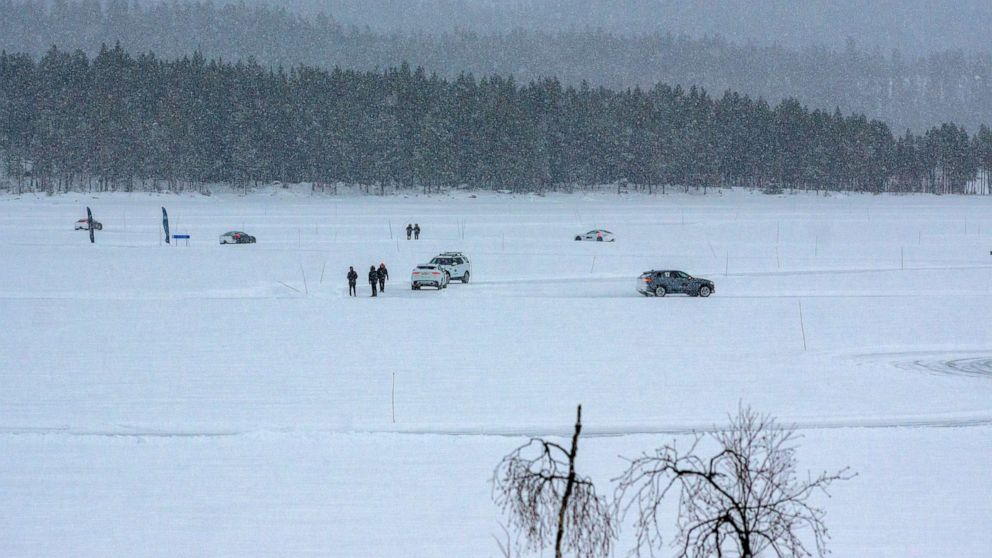
My goal was simple: master a vehicle's understeer and oversteer and gain the confidence to drive in treacherous conditions. My training ground: Lake Kagel, where Jaguar Land Rover sets up its Ice Academy every January through March. Over the course of two days, I would practice driving, maneuvering and braking on various ice circuits that pro instructors had carefully mapped out with a GPS. My time on the ice would be limited -- Arjeplog was cloaked in darkness for 18 hours a day. Every minute on the lake counted. A snowstorm was an added obstacle, hindering my visibility and magnifying the difficulty of the lessons.
Manipulating a vehicle in wintry conditions -- think black ice! -- can confound even experienced drivers. We are taught how to parallel park as teenagers. But driving in blizzard-like conditions? You're expected to learn on the go.
"Honestly, this type of driving should be part of your driving test," Karl Jones, a race car driver and Academy instructor, told me. "Not many people understand what to do ... how to react to it instinctively and quickly."
The first lesson involved zigzagging, or slaloming, around a series of cones on a closed circuit in Jaguar's all-wheel-drive F-PACE SUV. The other journalists and I would learn how to control the vehicle and balance the throttle with both the DSC (Jaguar's system that helps to maintain a vehicle's stability) turned on and off. Each vehicle had been prepped with ice guards and studded winter tires for the punishing terrain.
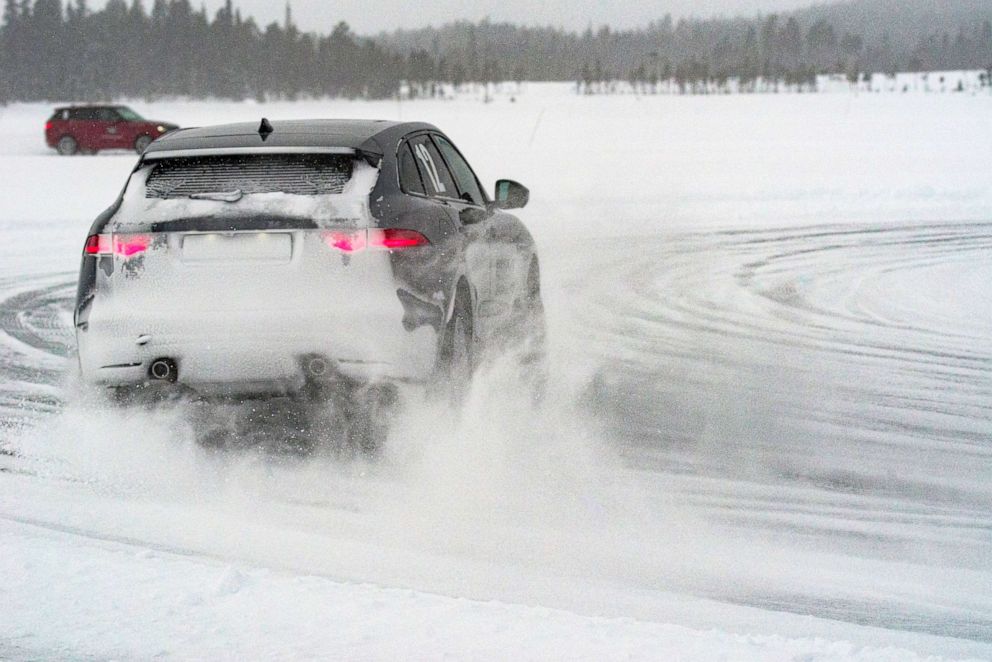
"It's super safe," Geoff Bows, an instructor, assured us. "All that can happen is that you drift into the deeper snow and one of the Land Rover recovery guys will drag you out. There's no huge consequence of making a dreadful mistake."
I gulped. How did my car end up at the front of the line? Geoff signaled for me to begin. I gently tapped on the throttle, trying to keep the SUV in line with the tracks Geoff and Karl had created in the demonstration.
"These cones -- we've got plenty of them," Karl announced through the walkie-talkie. "I want to see some sliding action."
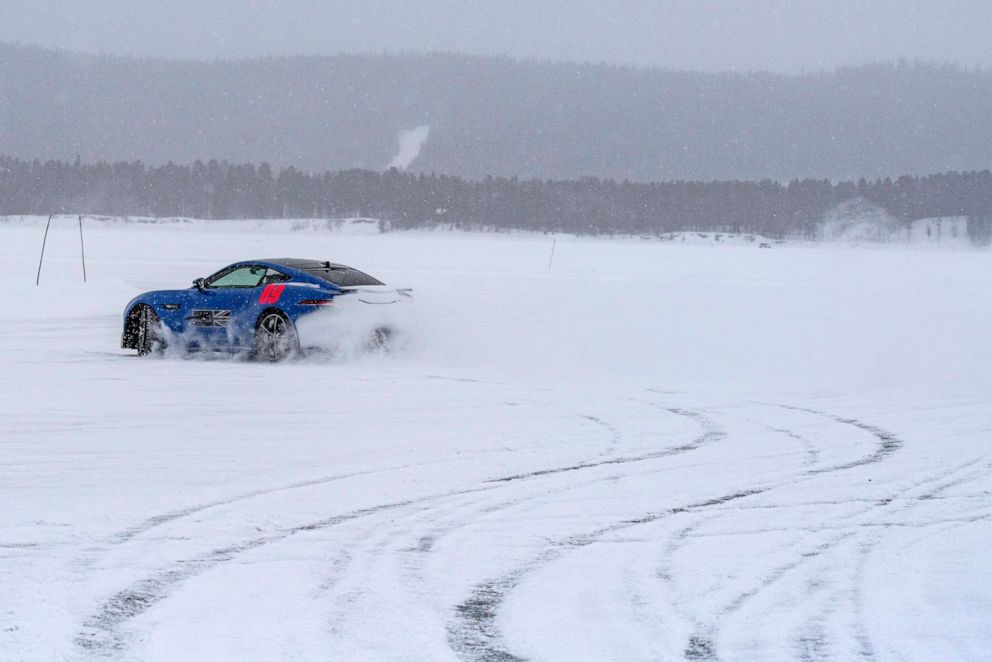
My rationality squelched any impulse to let loose on the ice. Pushing a car to its limits in extreme weather conditions? No way. But here, in desolate Arjeplog, there was no one -- or no thing -- at risk of being hit by reckless driving. The barren lake that supported the vehicles stretched for miles.
Karl and Geoff would push us harder each round -- "exaggerate the curves, balance through the slalom" -- and I would get a little faster but admittedly still cautious and restrained in my technique.
"This is the place to really have a go," Geoff reminded me. "The feeling of the car actually being out of control might be a bit alarming at first. There's a steep learning curve. But once you get the hang of it you'll enjoy it."

We moved on to a more challenging circuit, this time in the rear-wheel-drive F-TYPE sports car. Some of my fellow journalists were taking the instructors' advice to heart: their vehicles slid on the polished ice, spinning in circles, before finally colliding into a snowbank. The lesson would come to a halt as the stuck car was towed out of the fresh snow.
"You lifted off too much," Karl admonished one journalist over the walkie-talkie. "You've got understeer here. React to the steering quicker."
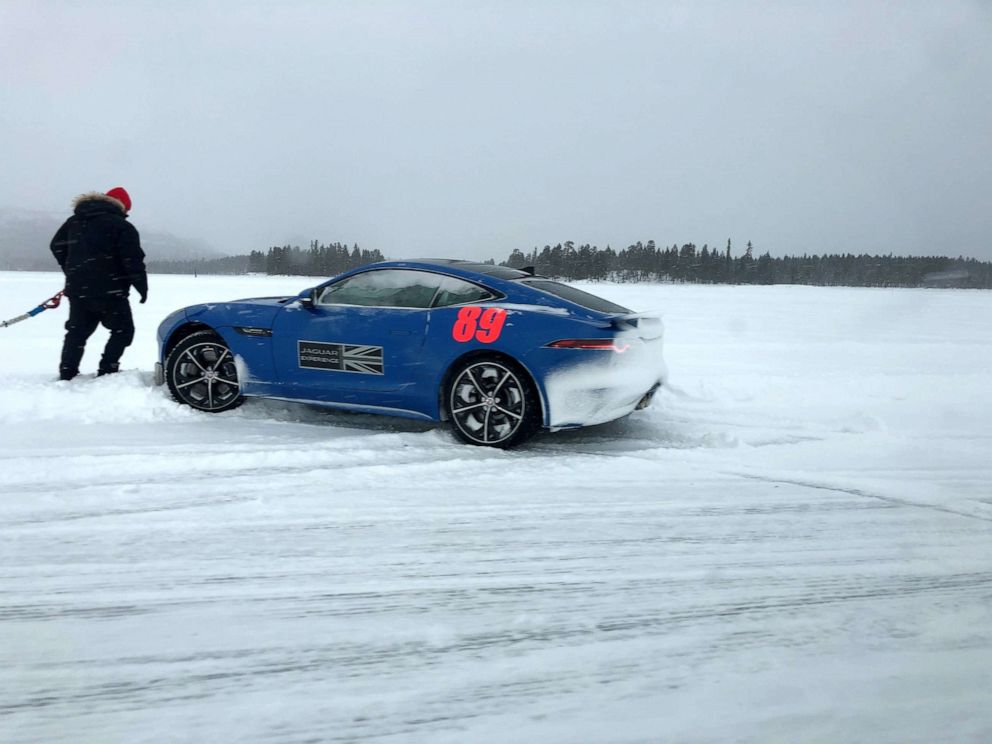
Every drill ingrained in us how to effectively drift and powerslide and maintain a constant skid angle. What we were doing -- speeding on ice, throwing the vehicle around, forcing the vehicle's rear to jiggle and dance -- was contrary to what we practiced in real life.
"The big thing here is learning how safety systems protect drivers," Ian Kitching, the Academy's global lead instructor, told me. "It's reverse psychology -- we want the driver to say, 'why would I ever turn off the ABS?'"
Jaguar engineers spend up to three weeks every winter at the company's testing facility in Arjeplog. The vehicles -- SUVs, sports cars, sedans -- are put through their paces on the ice circuits. Engineers review the data, determining if the traction control systems worked properly in every curve and scenario.
On the last day, with my self-trust growing, I flirted with danger. I purposely got the vehicles to slide, correcting with quick steering inputs and throttle response.
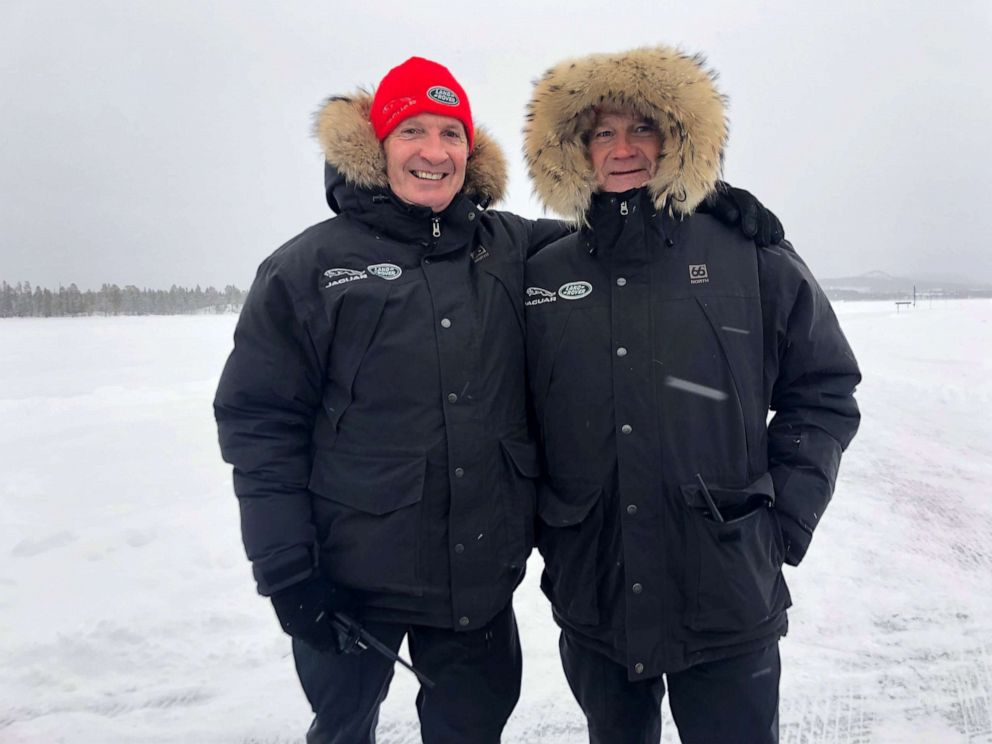
"The throttle will send some of the torque to the front wheels, therefore the front wheels will pull the car out of the slide," Geoff said. "But if you lift off the throttle too quickly -- especially in rear-wheel drive -- you don't want to overreact. Lifting off too quickly will make the slide worse."
No snowbank crashes for me. No 360 degree turns. No embarrassing examples of hubris. Could I have pushed the cars more? Yes. But driving on a frozen lake in an exotic locale was the perfect place to get over my fear of winter driving.



